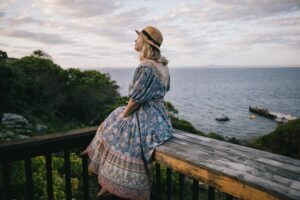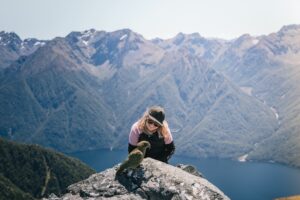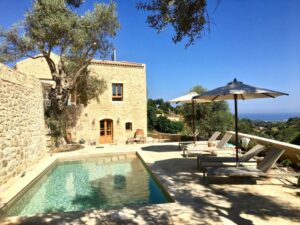The kārearea/New Zealand falcon is one of my favorite birds.
Somewhat known, I would still say it’s a pretty underrated species here, not often getting as much attention as other flashier birds – cough, cough, kea. You might have seen them featured on the $20 note.
Small yet packing a punch, kārearea are spectacular birds. They’re also pretty unique in many ways. Only found in New Zealand, these powerhouses can fly over 200km/h and hunt prey bigger than themselves. And they’re gorgeous to admire.
Blending in easily, it’s easy to miss spotting them out in the wild. But once you know what to look for, you can’t help but keep an eye out looking for them.
‘Ngā Whenua I Haroa E Ngā Kāhu – The Lands Soared Over By Hawks’
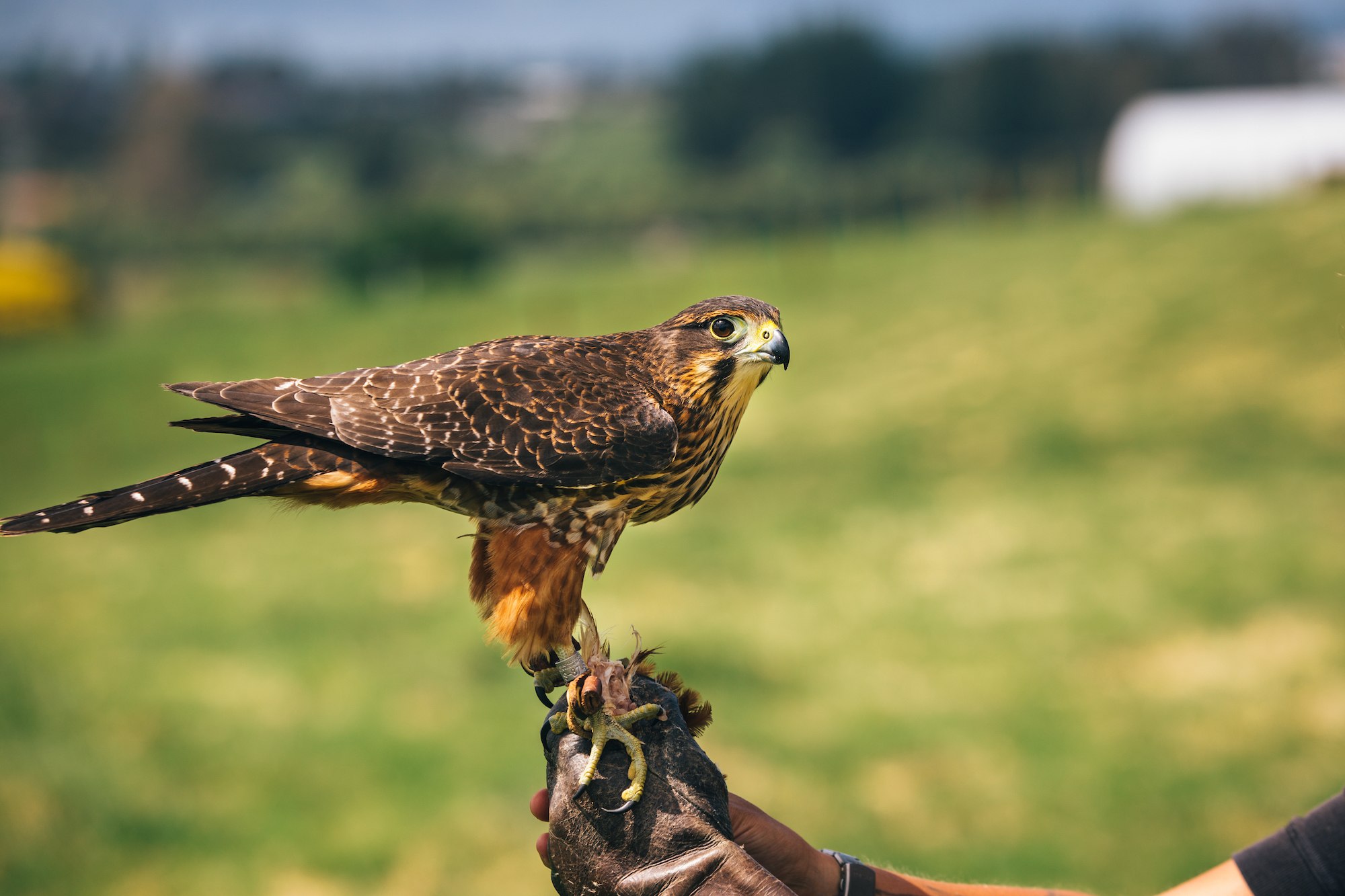
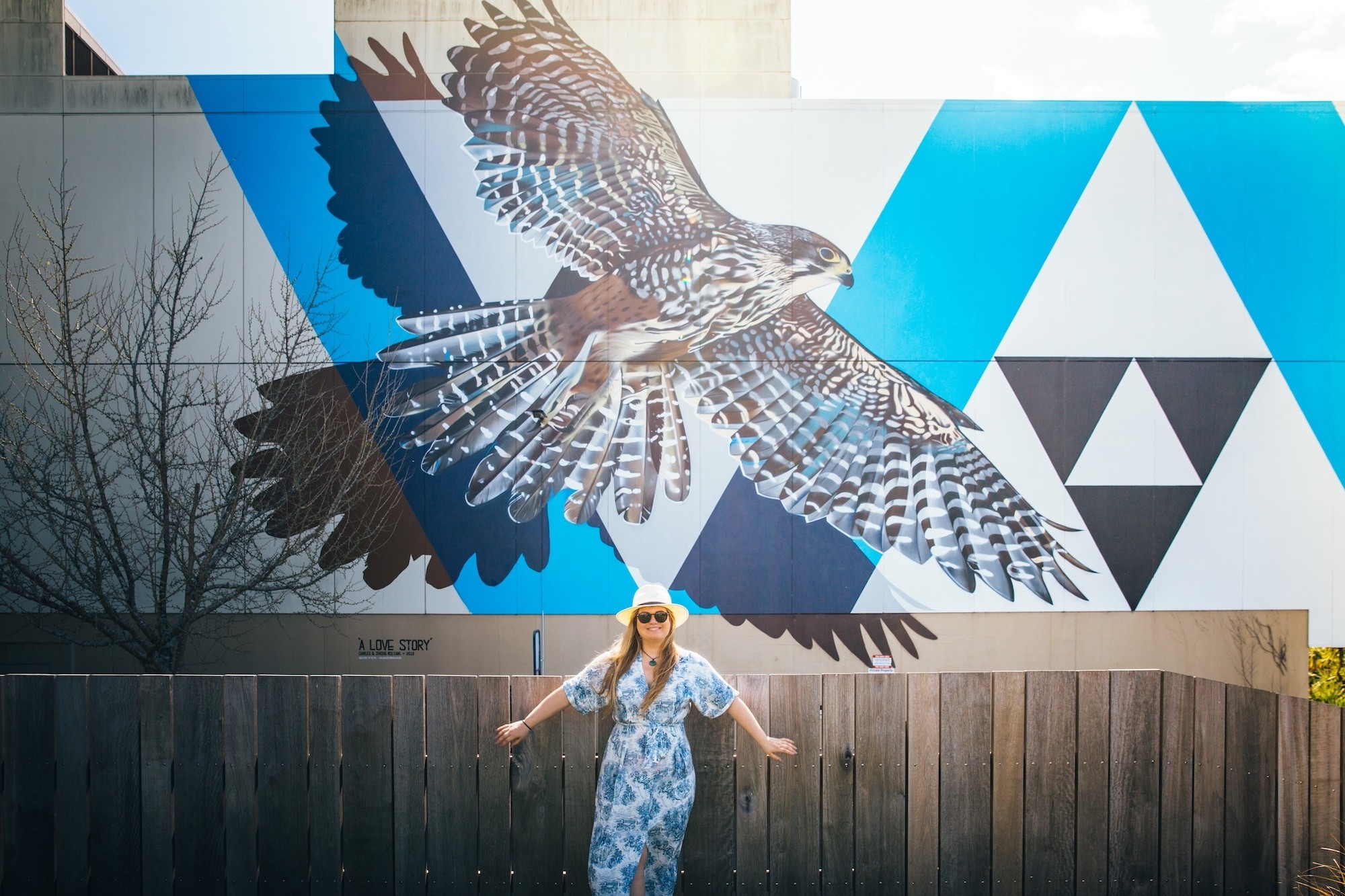
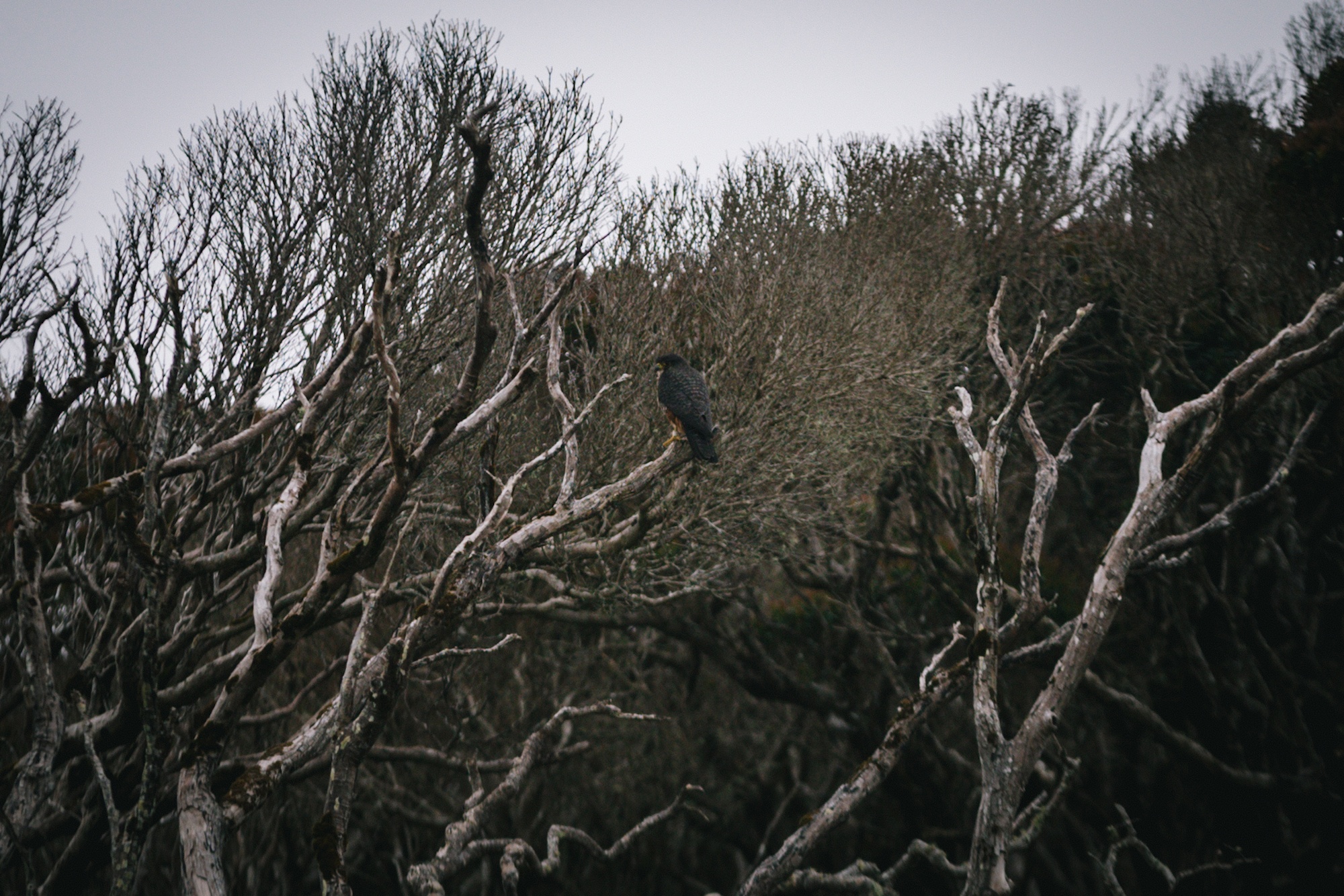
Kārearea evolved to hunt in the dense forest (before we humans burnt most of them down here).
Out of the 38 total species of falcons worldwide, the kārearea is one of only four that hunt in the forest. Because of this, it has short wings so that it can maneuver easily. The soft feathers are robust and easily bounce back instead of breaking while hunting in dense bush.
They have also evolved to be able to hunt out in the open, too, with the iconic falcon stoop-dive move. Half the size of the swamp harrier (which confuse many), you won’t likely see kārearea feeding on roadkill – they hunt live. They also quickly flap their wings instead of gliding.
Total pocketrockets.
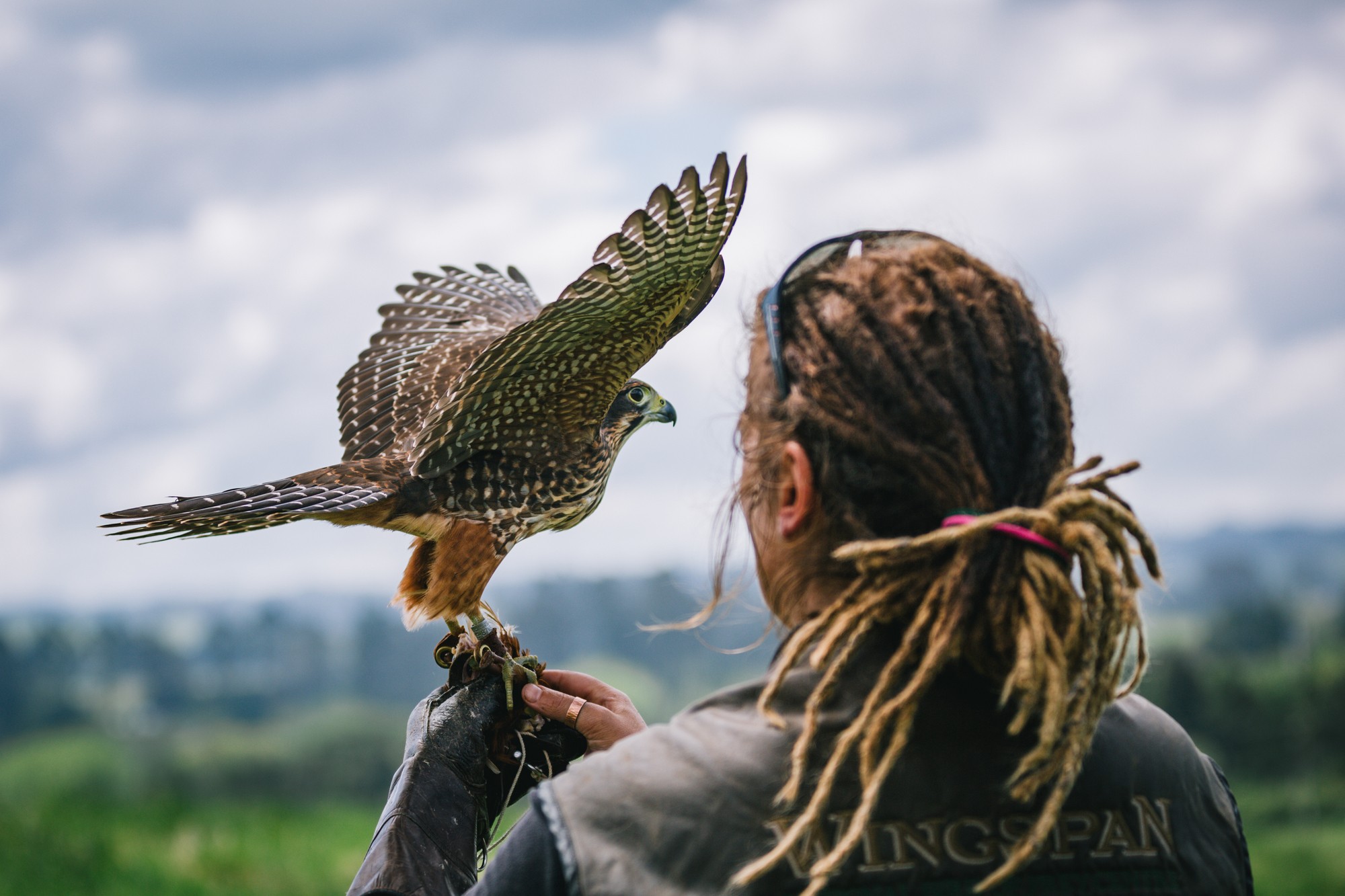

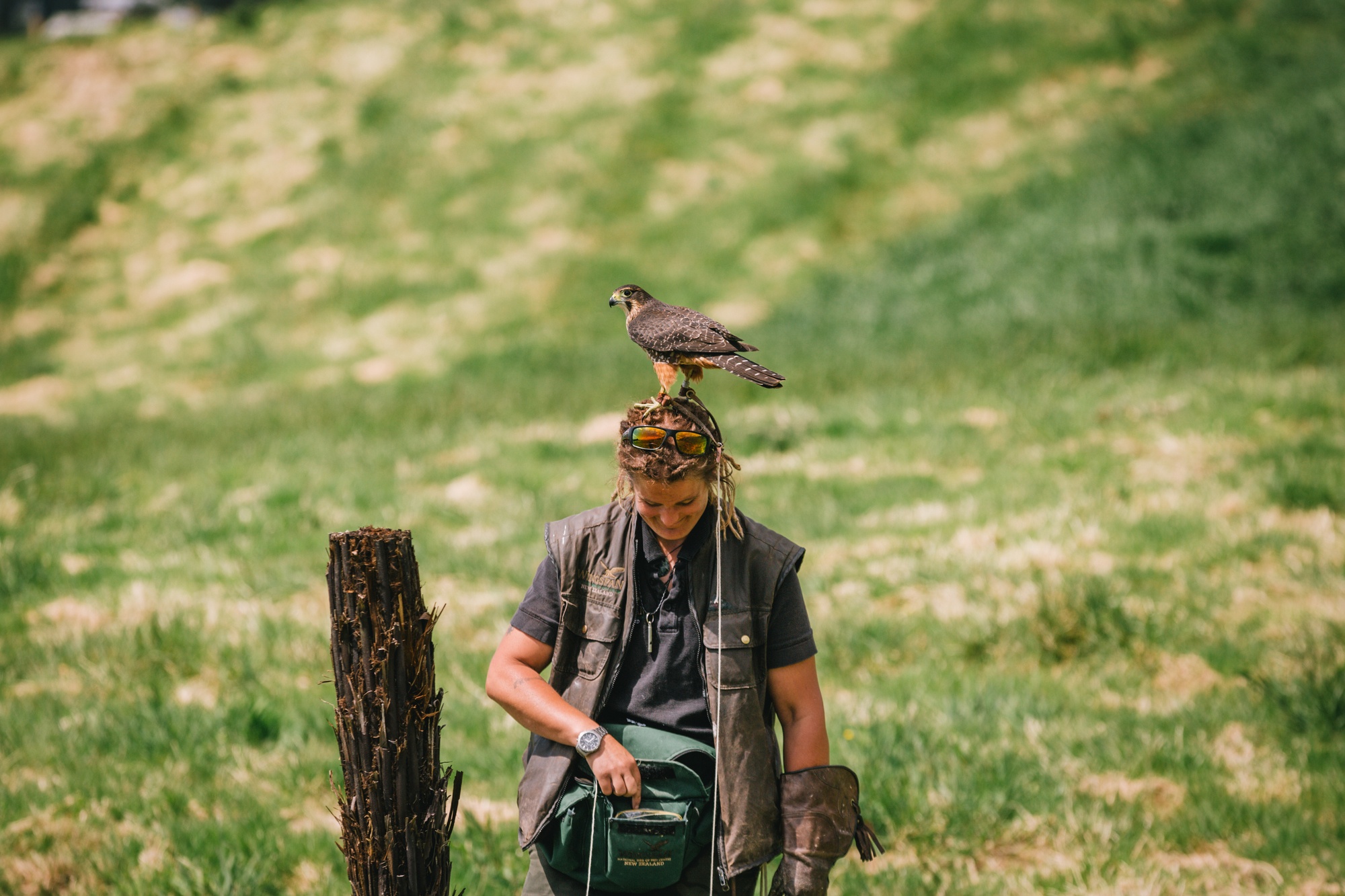
Looking up close, you can see that they’re majestic creatures.
Kārearea have beautiful broad wings that reach nearly 100cm in length; they have long yellow legs made for catching small prey. A long tail helps with maneuvers as they hunt, and they have the most beautiful yellow, brown, cream, and gold feathers. Males are smaller than females – which I love.
There are also three different ecological types of kārearea: Bush, Eastern, and Southern.
- Bush falcons generally occur in the North Island, south of the Waikato, to the top of the South Island. They’re smaller.
- Eastern falcons are larger and paler, ranging from Marlborough down into the southern end of the South Island, preferring open, dryer habitats east of the Southern Alps.
- Southern falcons are intermediate-sized and live in Fiordland, Rakiura/Stewart Island, and down all the way in the subantarctic Auckland Islands.
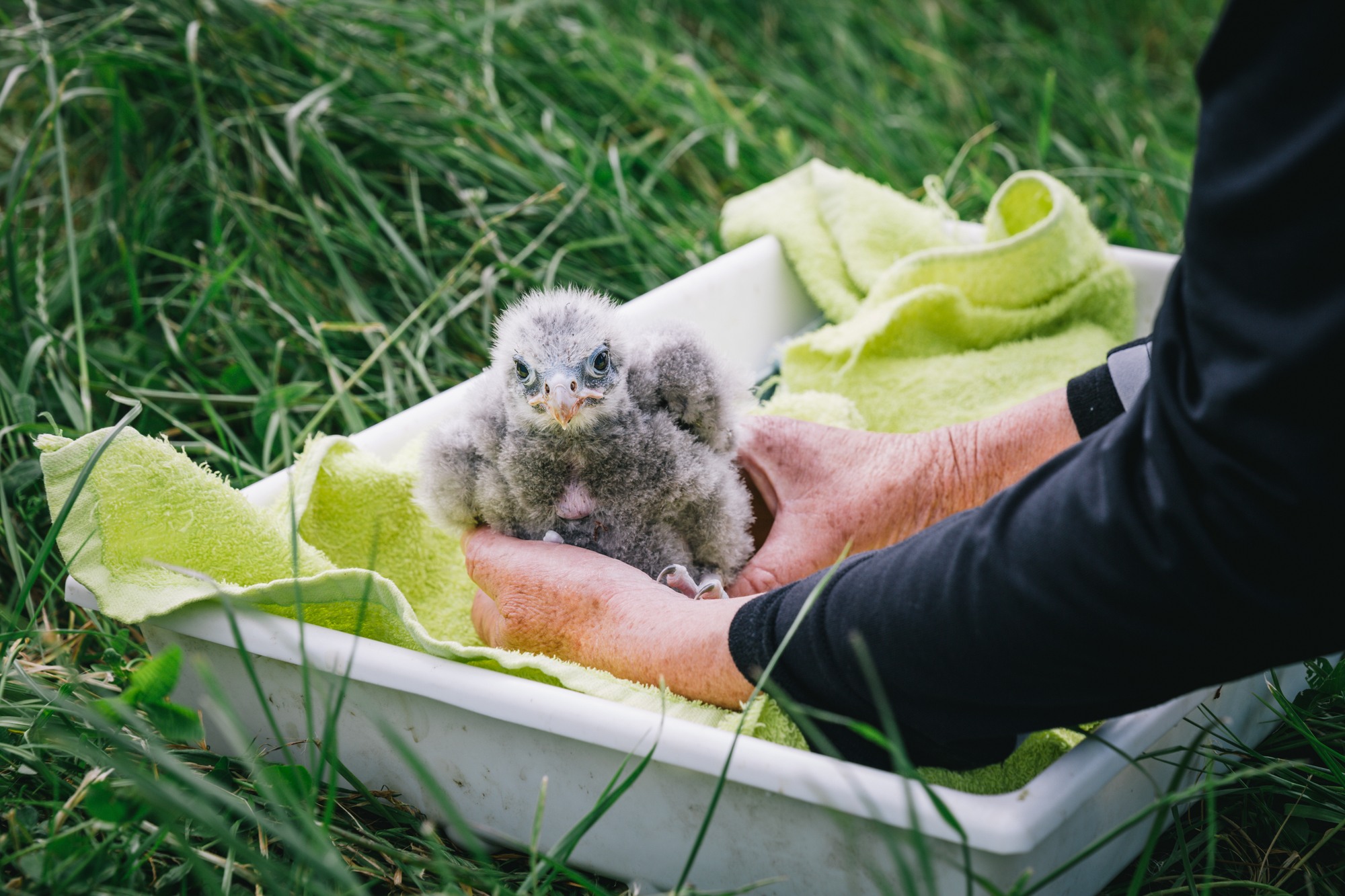
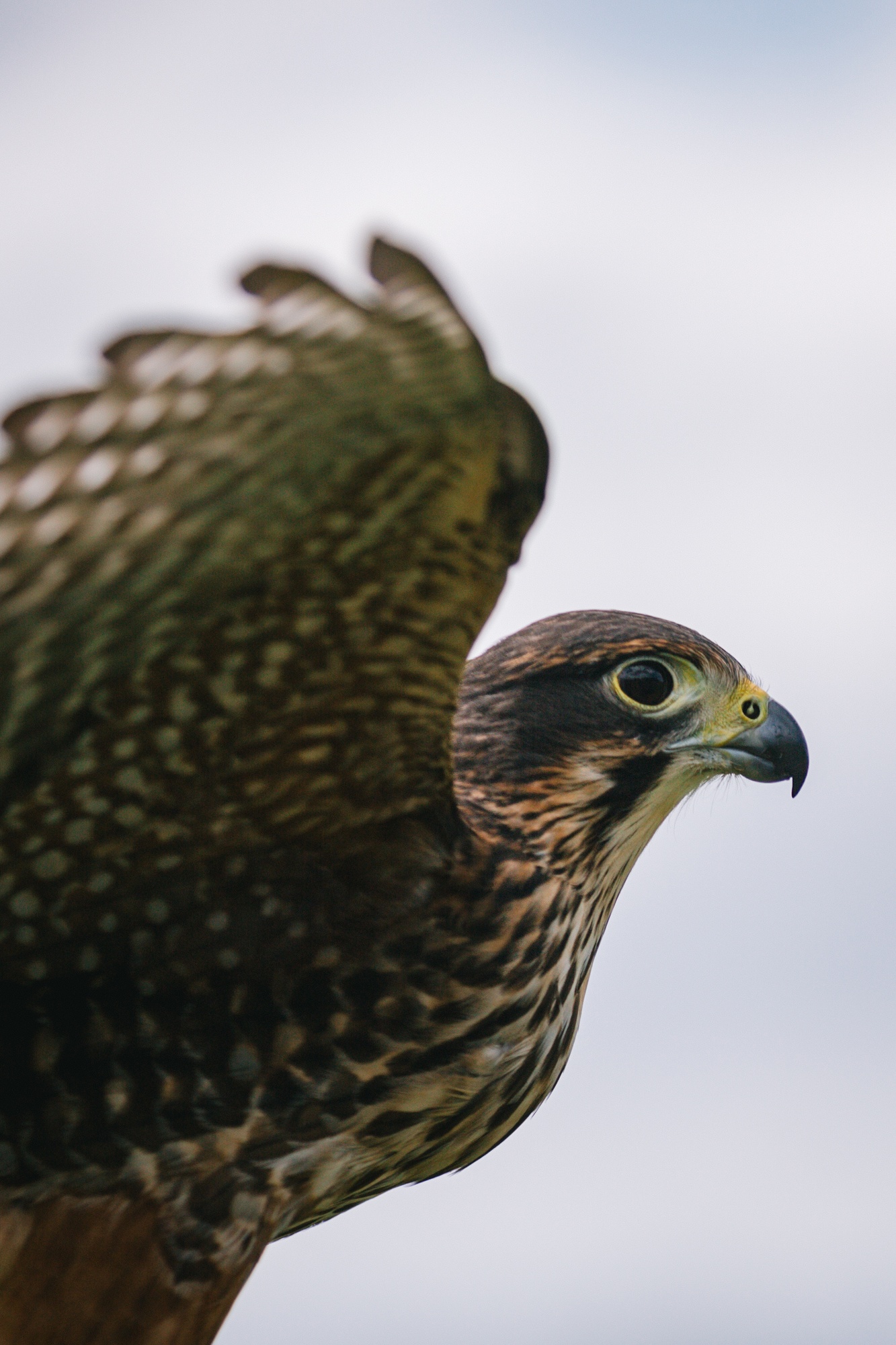
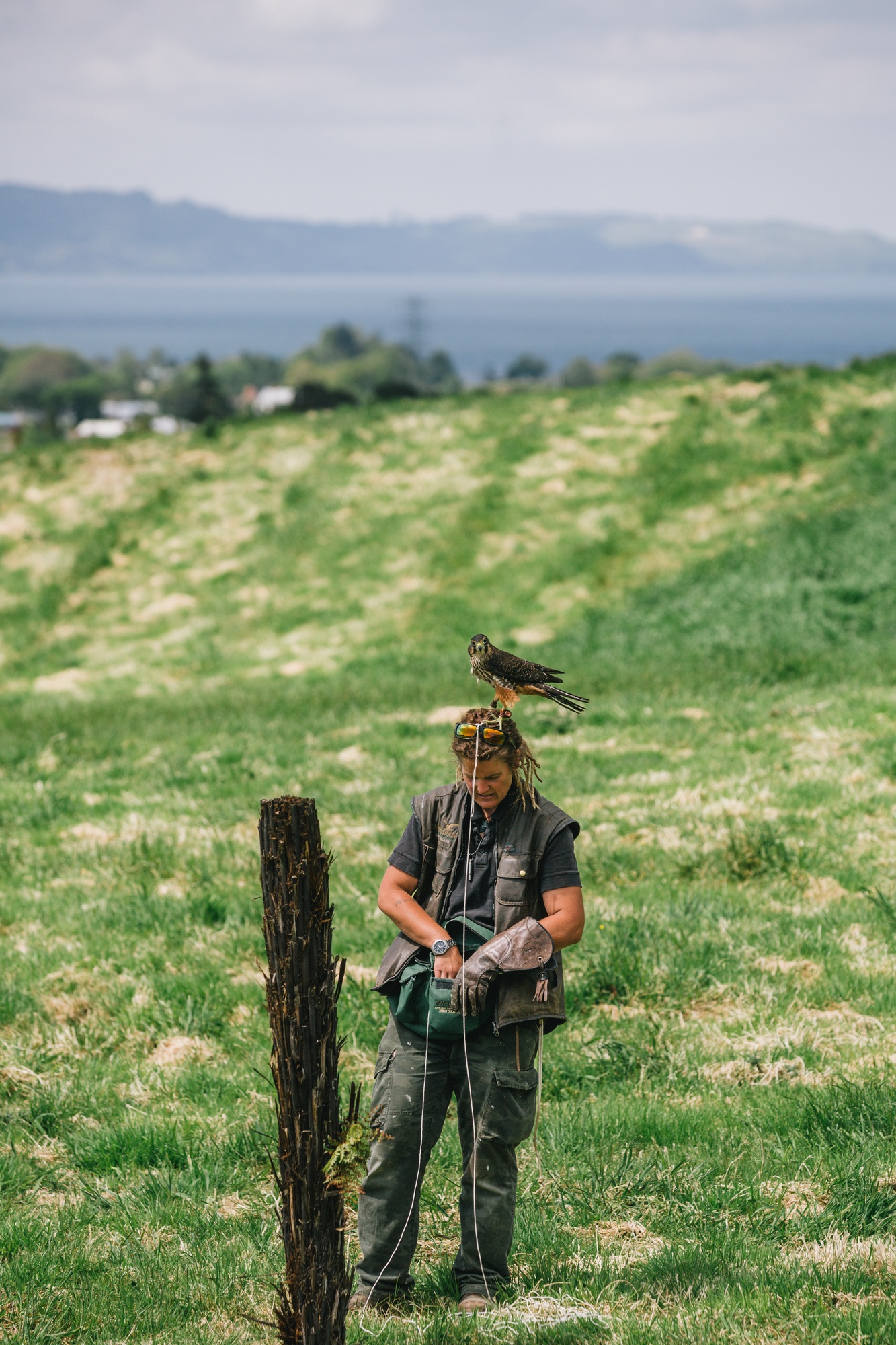
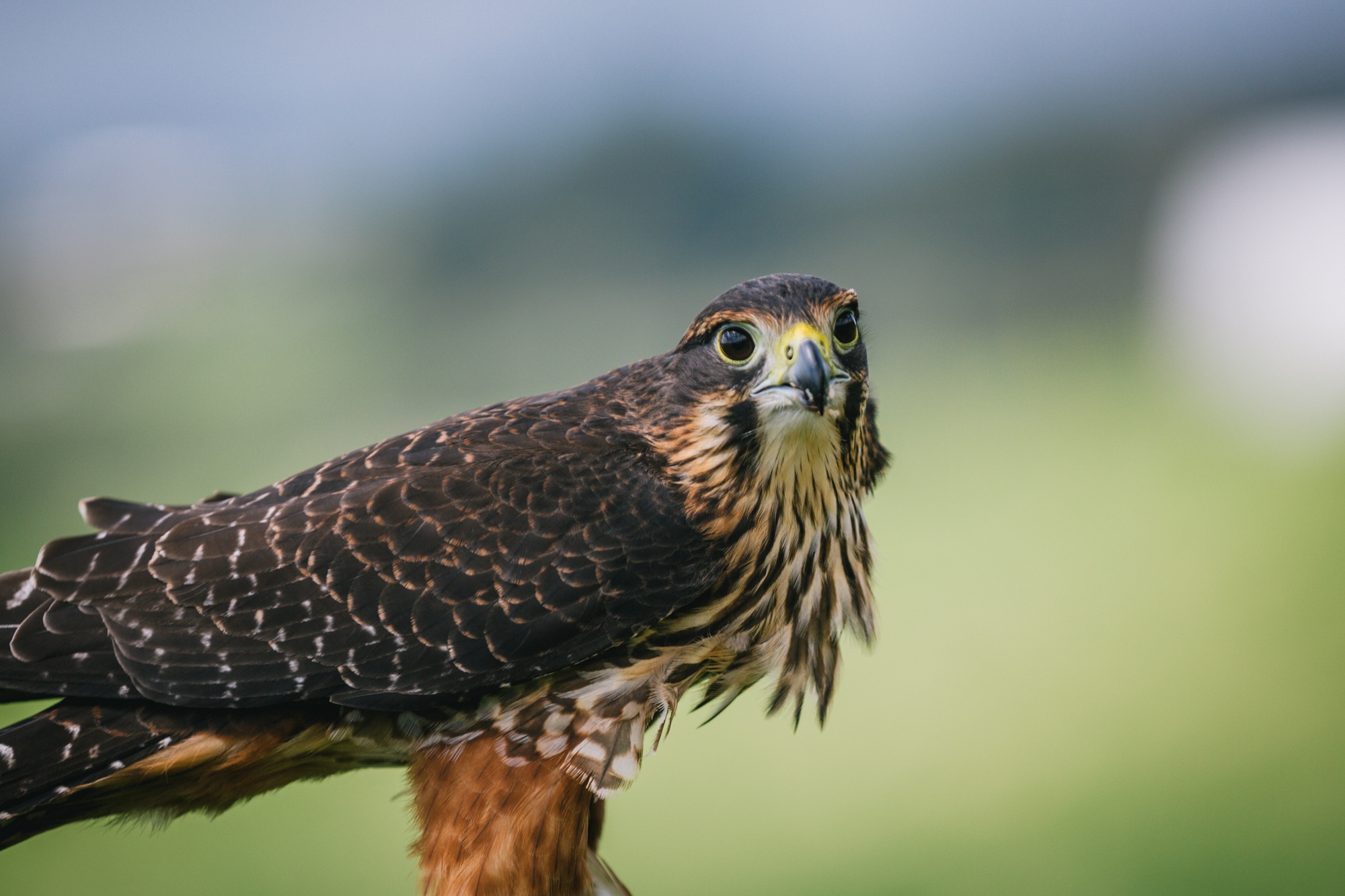
Often my friends that know about kārearea know about them because they’ve been dive-bombed by them, especially mountain biking in places like Rotorua or around pine plantations.
They don’t build nests but rather a scrape. Sometimes they nest on the ground, and if you come anywhere near them when they’re on the nest, you will know it. They will aim for your head and aggressively attack you, and they don’t miss. Best to avoid.
The kārearea are thought to fill the ecological predator gap, which would normally be occupied by a mammal predator – another reason they breed on the ground. Breeding starts in winter, and the chicks fledge at the end of summer. The chicks hatch in the spring. There can be up to four chicks in a nest, but usually, it’s around two.
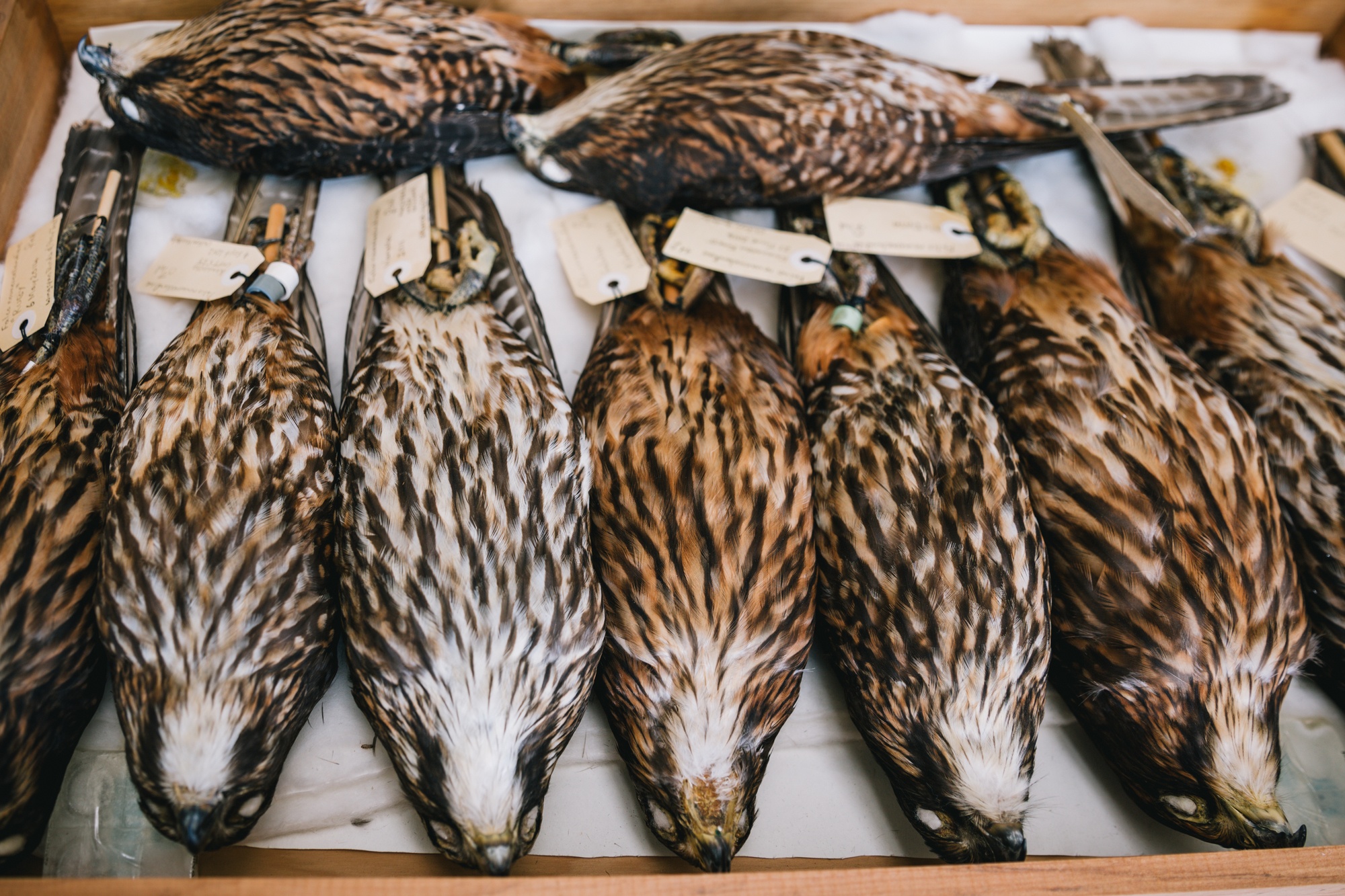
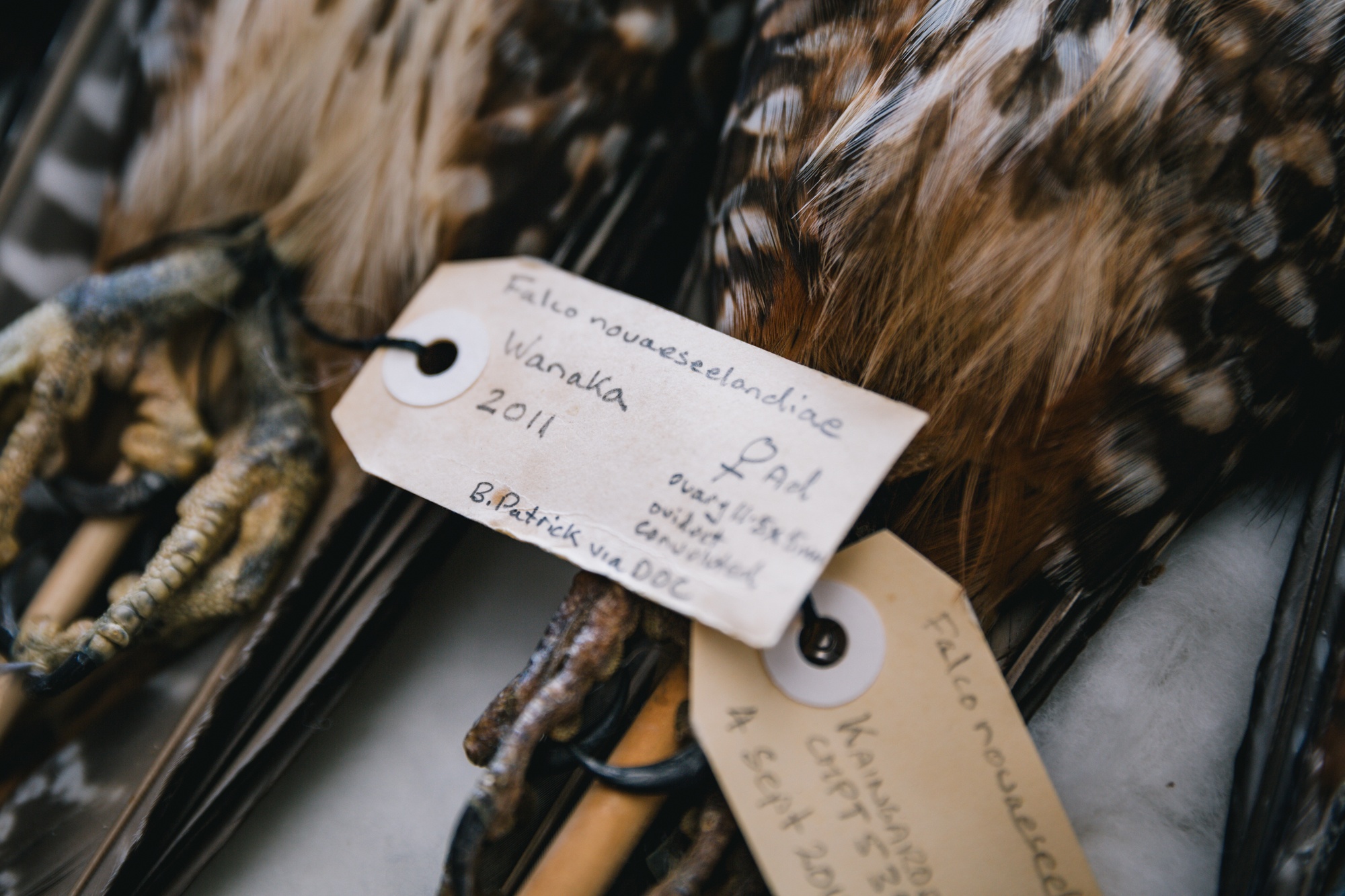
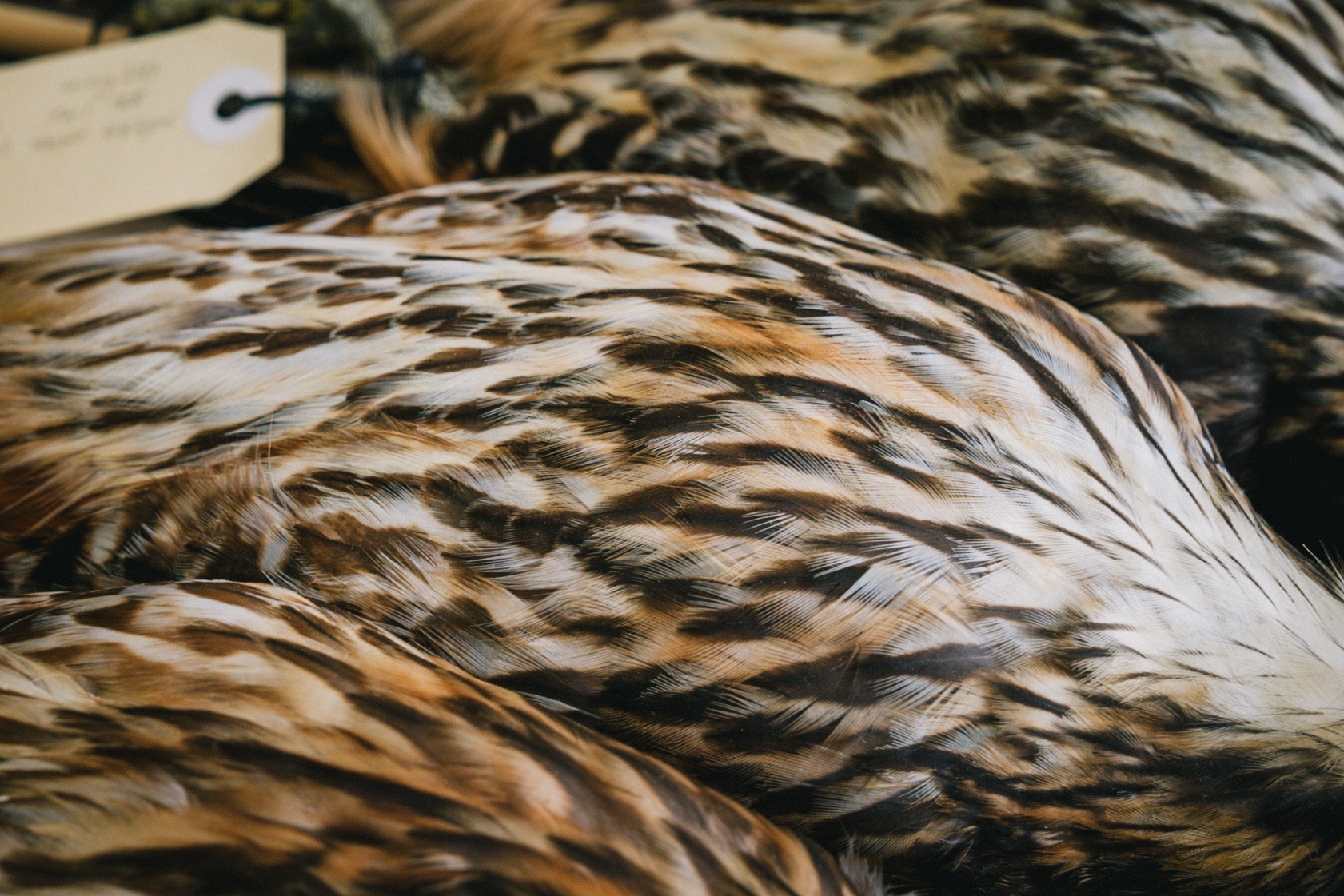
Now here comes the sad part – but don’t worry; there’s still hope.
There are less than 8,000 kārearea left in New Zealand today. And there’s still a lot of work to be done around protecting them.
Because they often nest on the ground, this means they are susceptible to introduced predators, especially the eggs and the chicks. There are also videos of cats entering kārearea nests and killing the chicks because the mother couldn’t fend them off. Other threats besides predation are habitat loss, disturbance, development impacts, being shot by humans, wind farms, and power line electrocution.
Often the big power lines in the wide open parts of rural New Zealand make perfect perches.
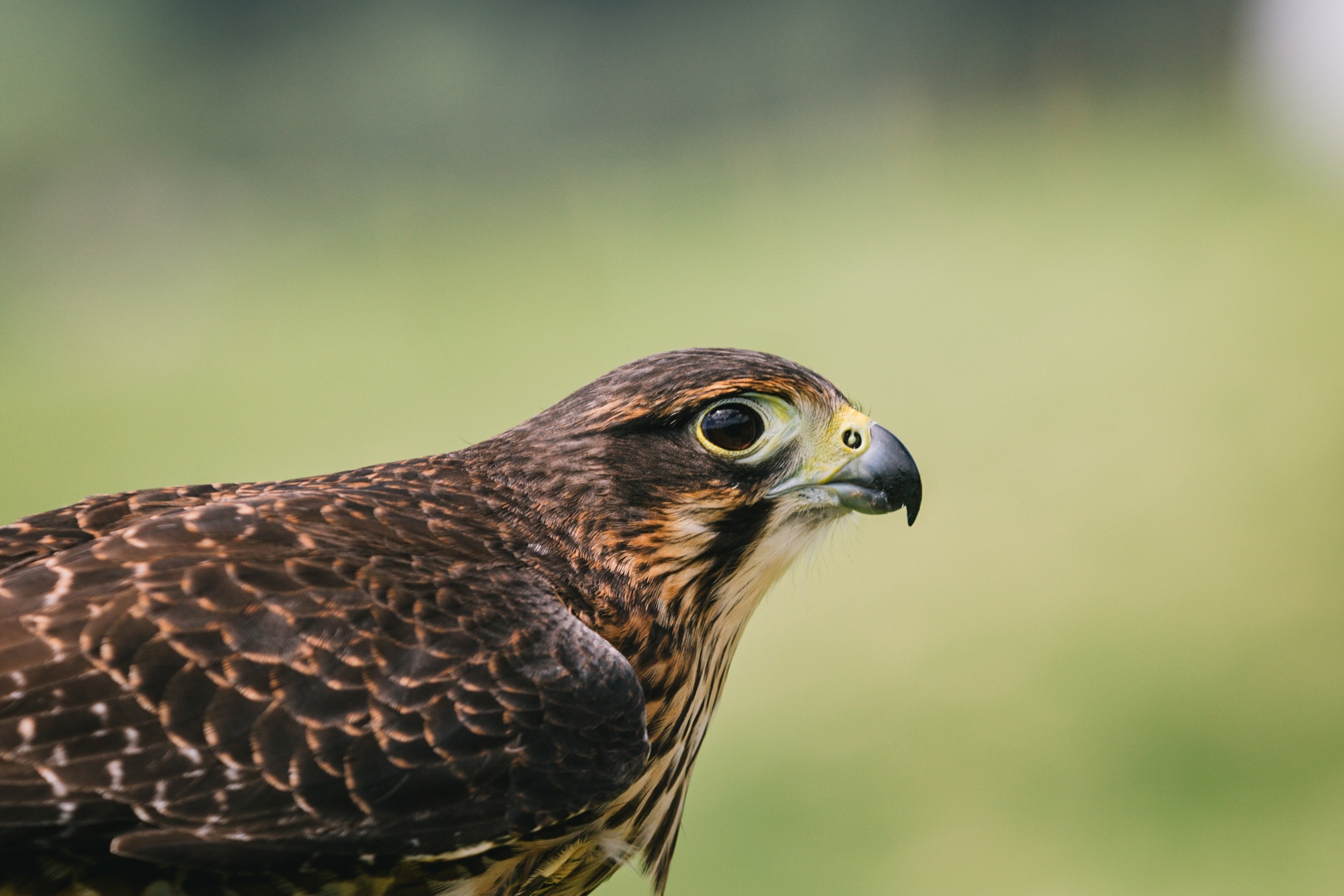
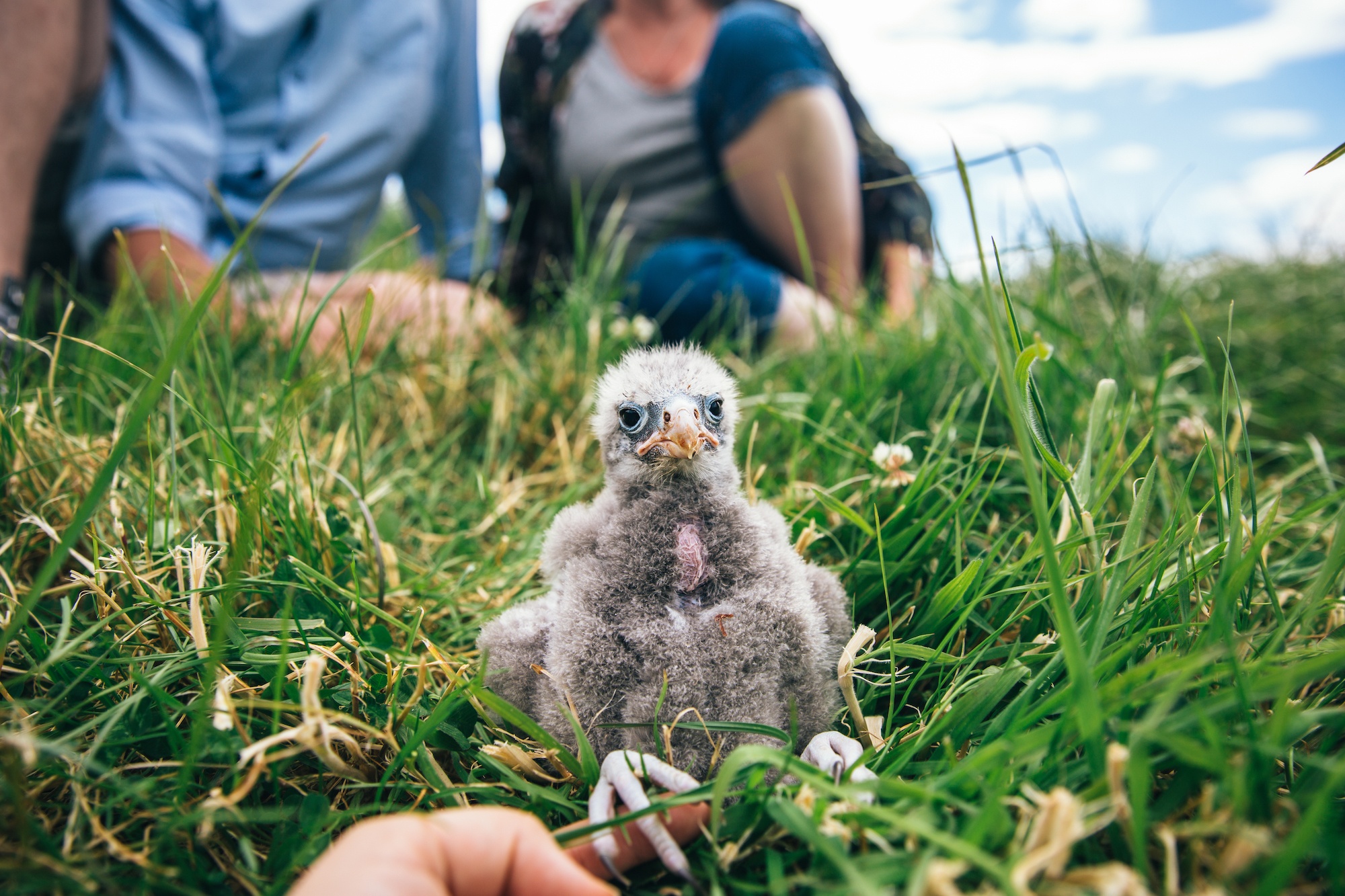
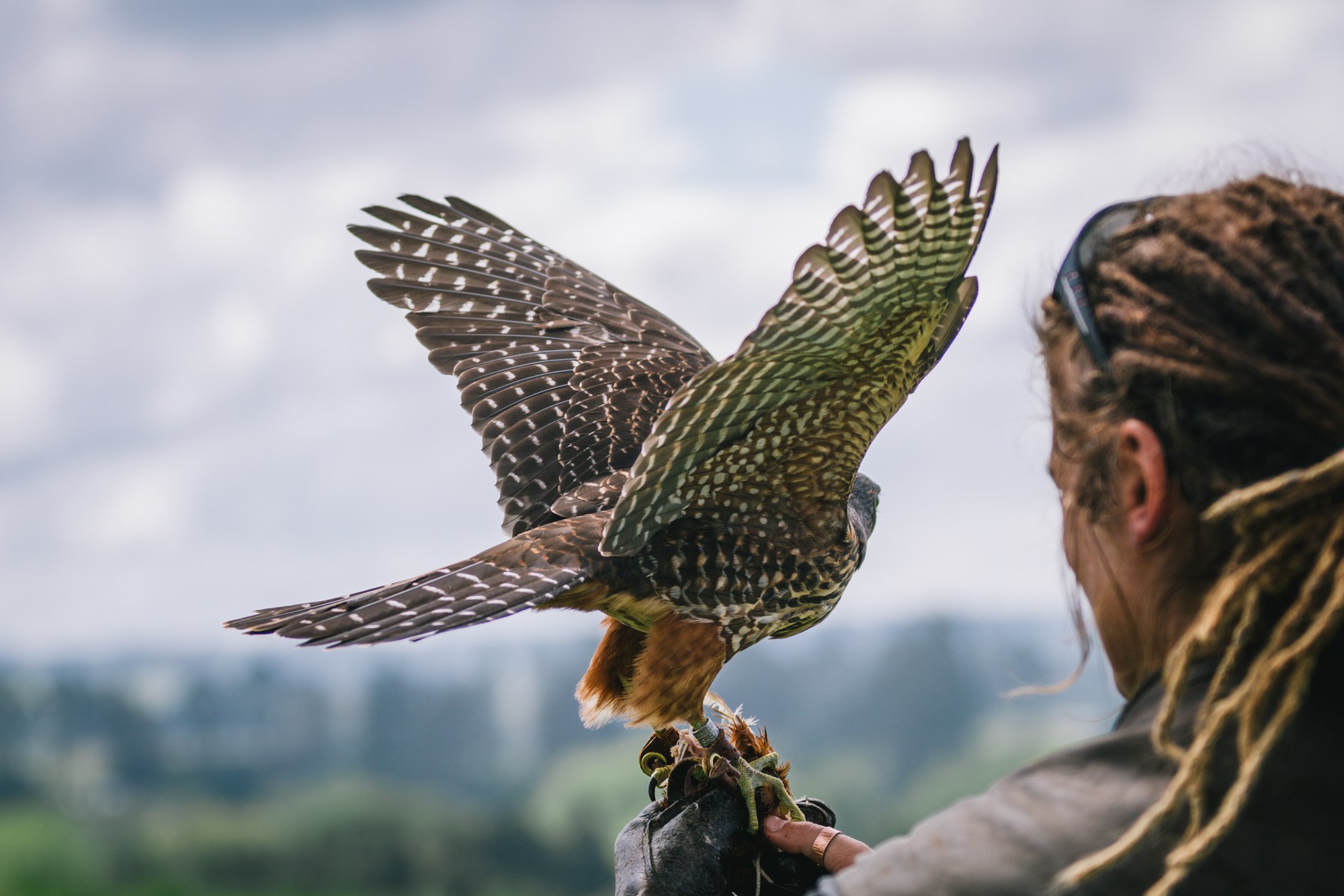
There are pockets of kārearea around New Zealand, including down here in Central Otago, where I live in Wanaka. Here we have the Eastern form of kārearea. In 2021 their status was officially reclassified and worsened by DOC as they went from “recovering” to “national vulnerable.”
The Cardrona Kārearea Conservation Project is a community-led project that aims to develop a science-based conservation approach for kārearea in tussock grassland mountain ecosystems like up at Cardrona. They’re currently in year three out of five of research.
This is actually similar across most of New Zealand; there really just isn’t a lot of information about kārearea.

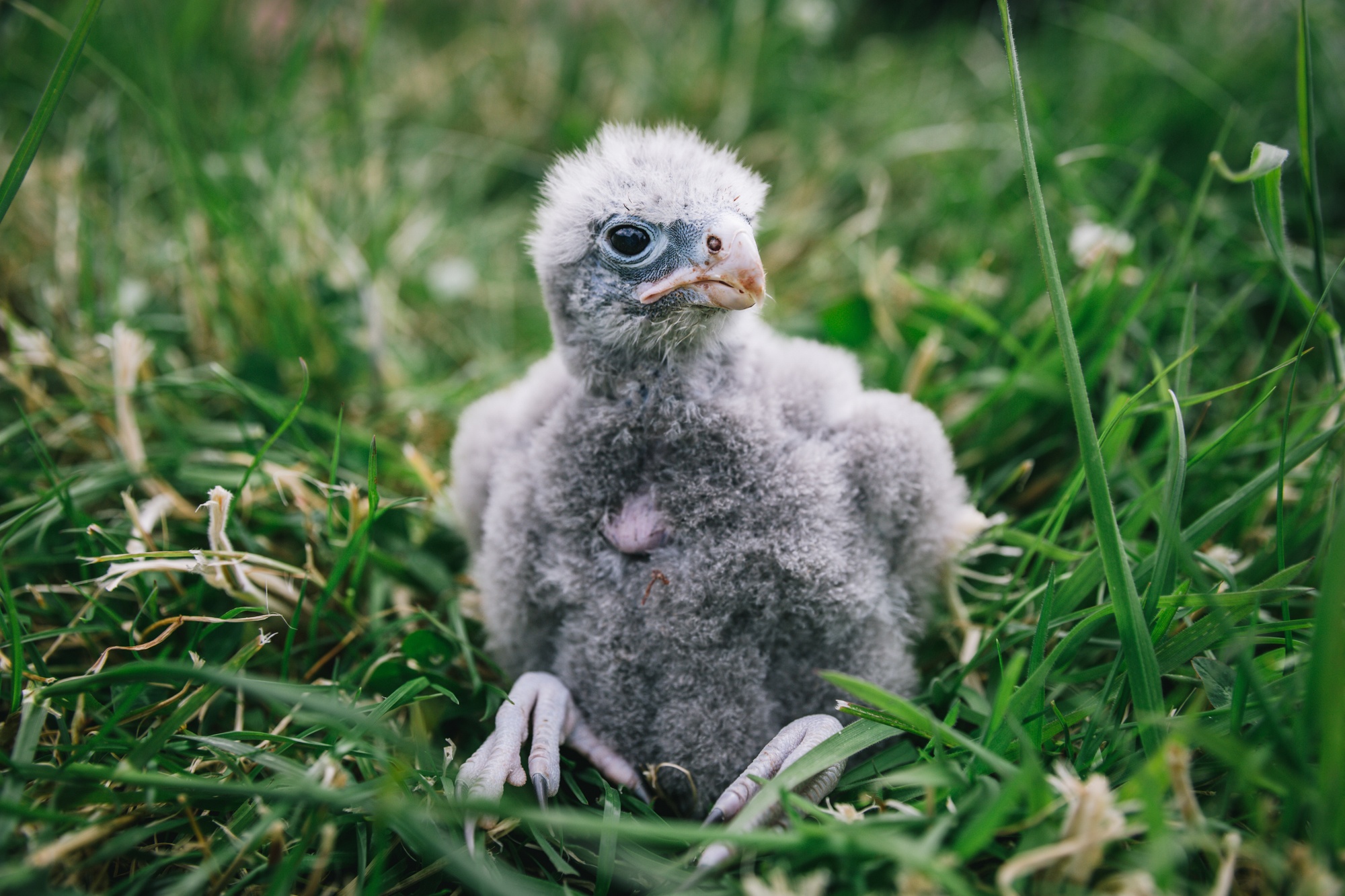
Not much is known about the kārearea that live in alpine environments, so a lot of research needs to be done to understand them and help them. There are no current quantitative studies of kārearea in this area. In the conservation world, you need to fully understand the position and risks an animal faces before you can create a rescue plan.
These are things like how many breeding pairs are in the area, what are the trends, and whether they are successful. Do the chicks and adults survive, and if they don’t what happened, then we can plan how to protect them in future. Luckily they all seem to return to breed in the same area every year, making it somewhat easier to observe.
Most of the kārearea habitat falls on private land around this area, so you must work with the farmers and locals to gather data and observe.
You can only catch kārearea to leg-band them when they are on the nest because, well, they attack you.
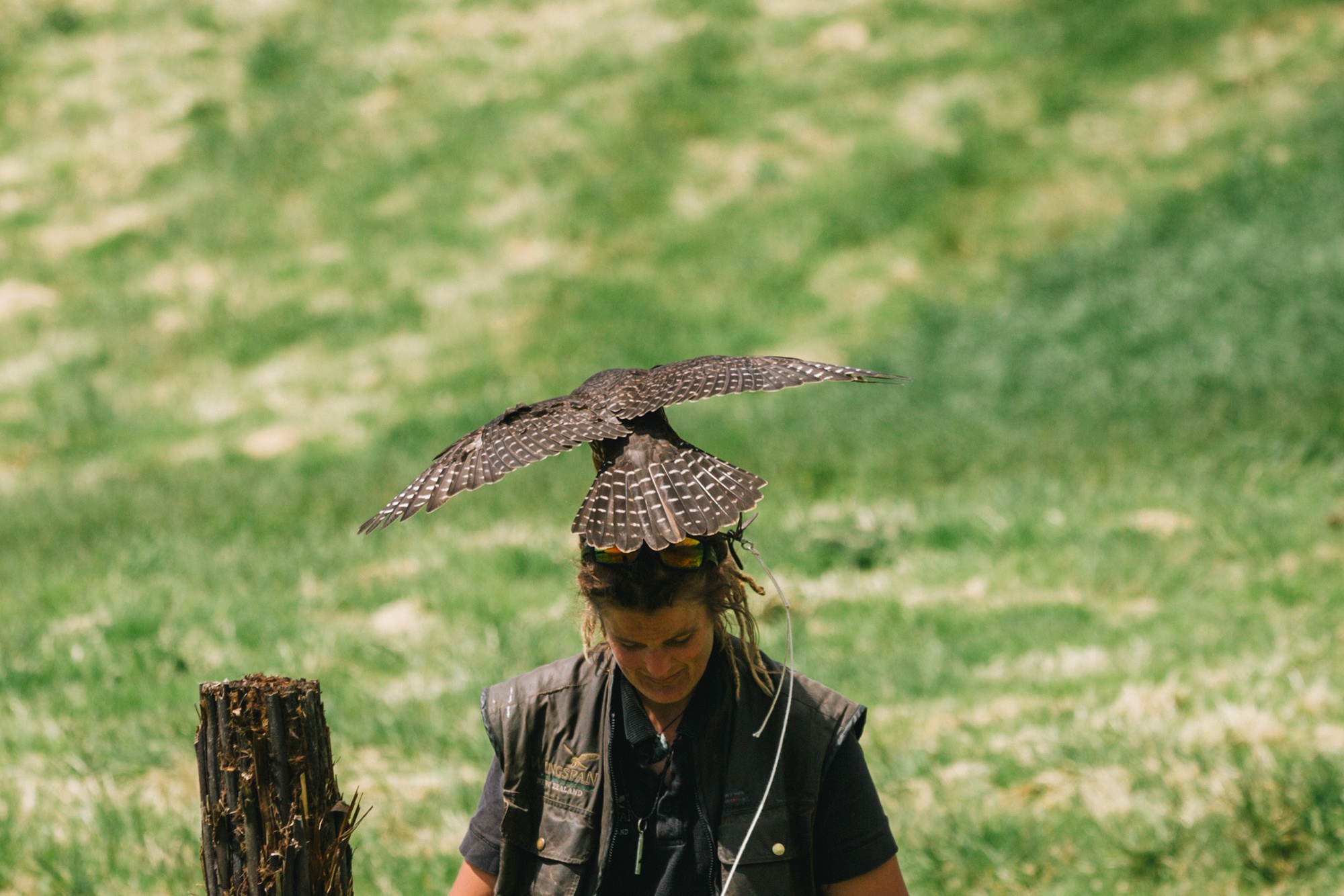
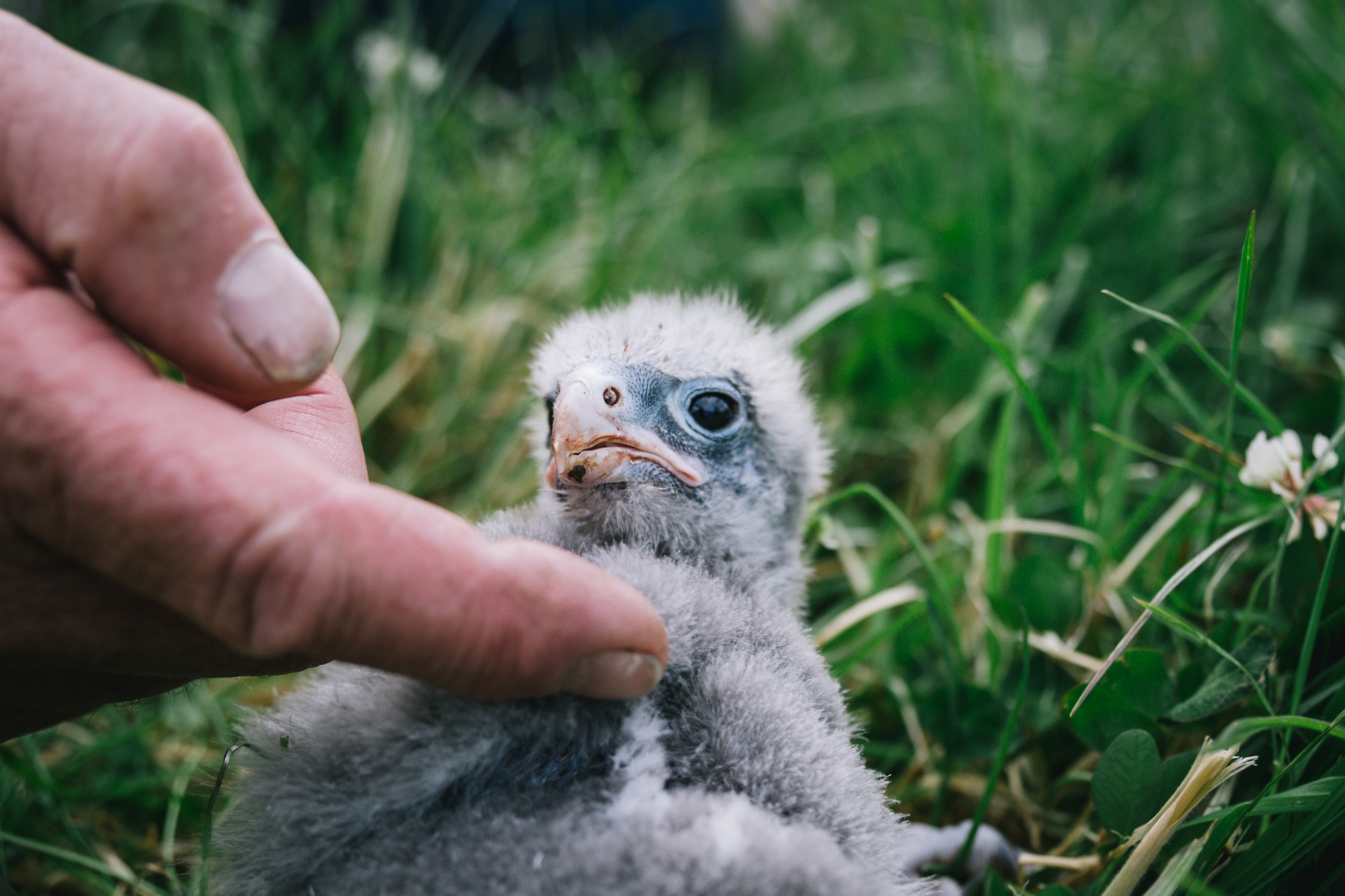
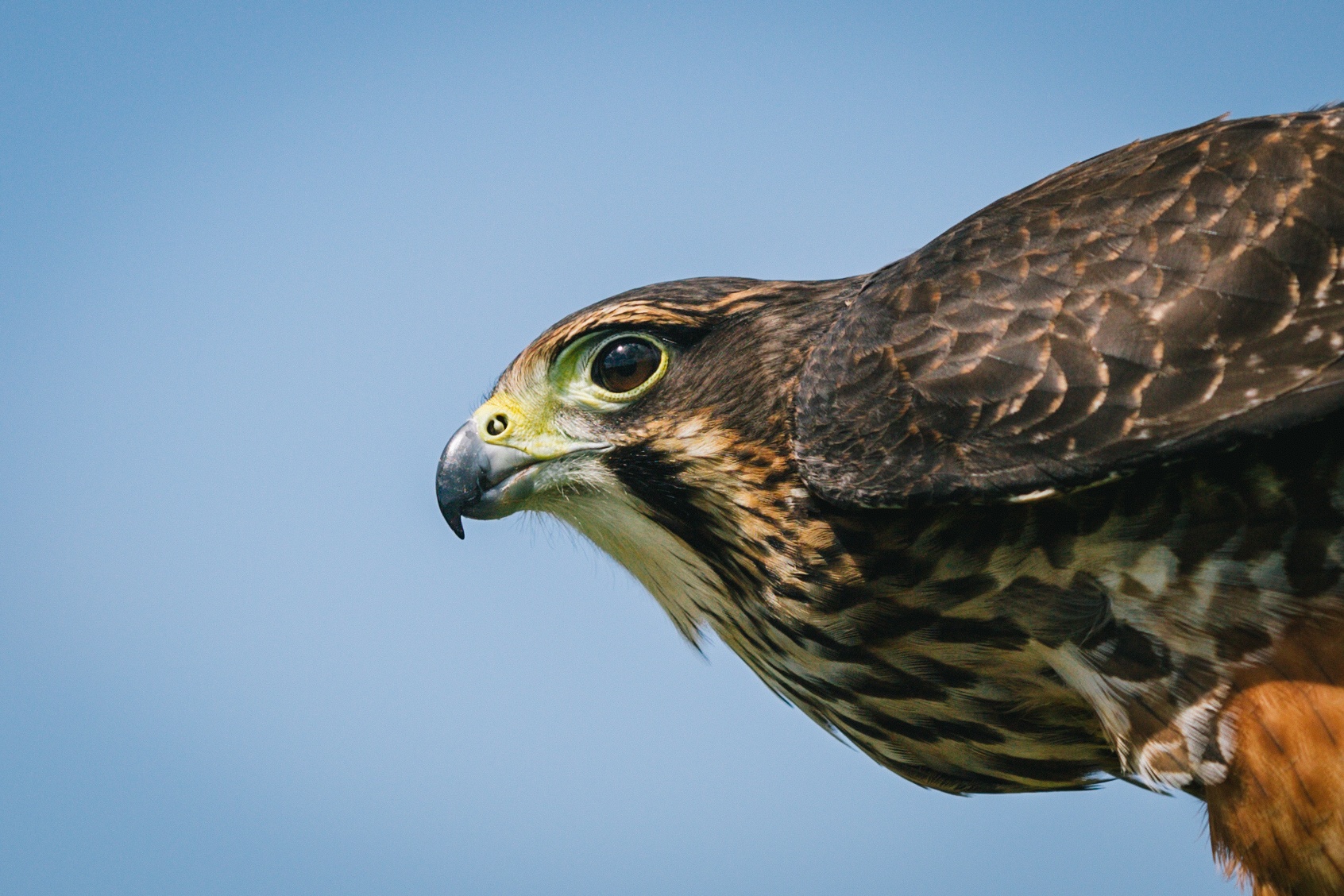
Many issues around kārearea are preventable based on what we have learned so far from the research here with the Cardrona Kārearea Conservation Project. The biggest issue? Mammal predation. Cats. Stoats. Possums. Hedgehogs.
This sounds painfully obvious, but I’m going to dig in anyways. Sure a bigger or adult bird has the chance to fight off predators. But for a species to survive, that means that the eggs and then chicks have to fledge successfully. This is the big problem.
You might not think that seemingly innocuous critters like hedgehogs wouldn’t be an issue with falcons, but they are. They eat the eggs and the chicks. Wildlife cameras were used to record the nests last year and caught a hedgehog repeatedly attacking a nest with four ten-day-old chicks while the mother tried to fight it off. Another nest in town failed because someone’s pet cat repeatedly raided it.
But the worst of all is when we cause the nests to fail. A bunch of kids here in Albert Town were accidentally harassing a nest and taking photos, disturbing the birds for a prolonged period. Even just driving the birds away for long enough means that the babies can fall victim to predation.
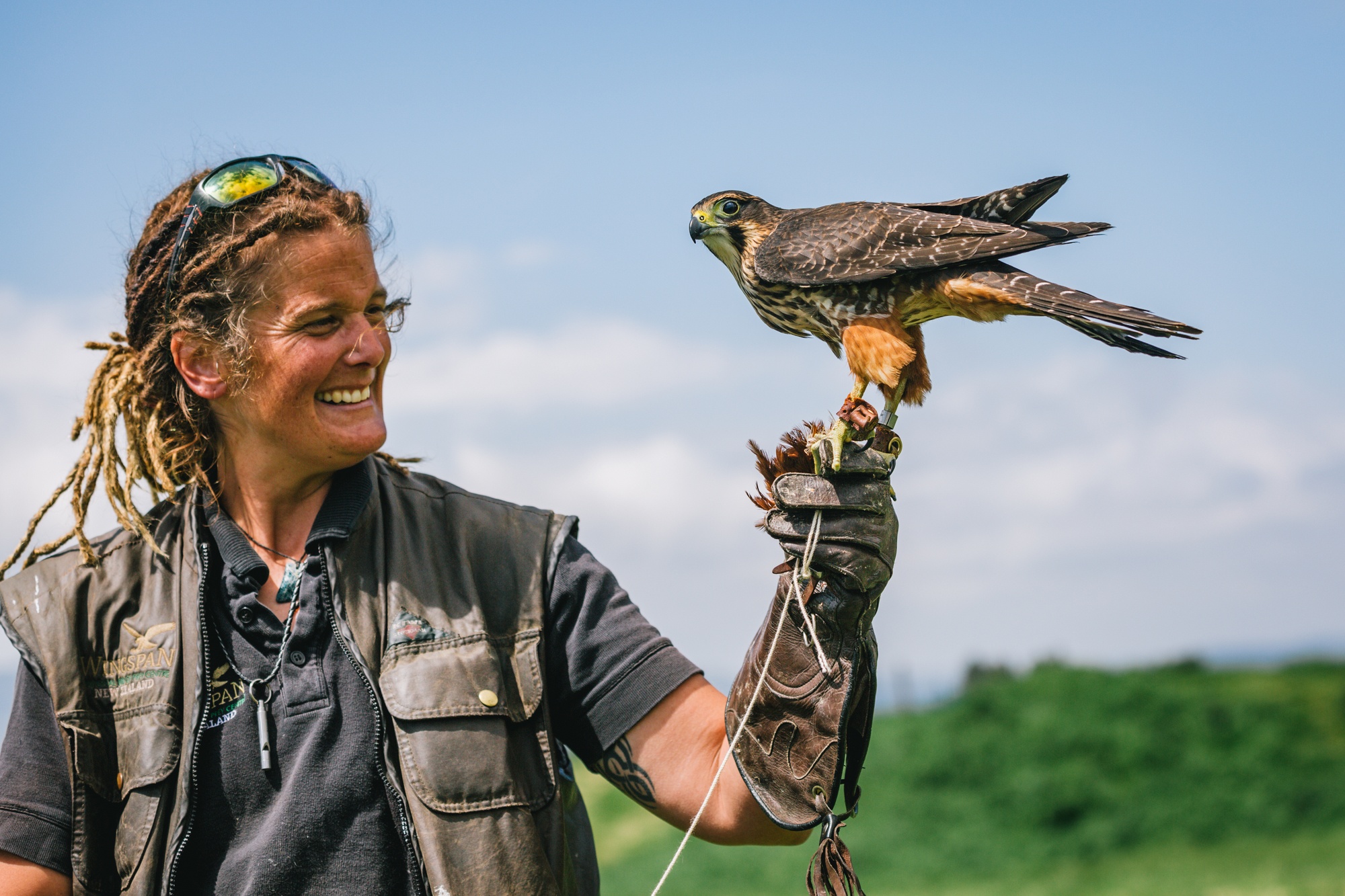
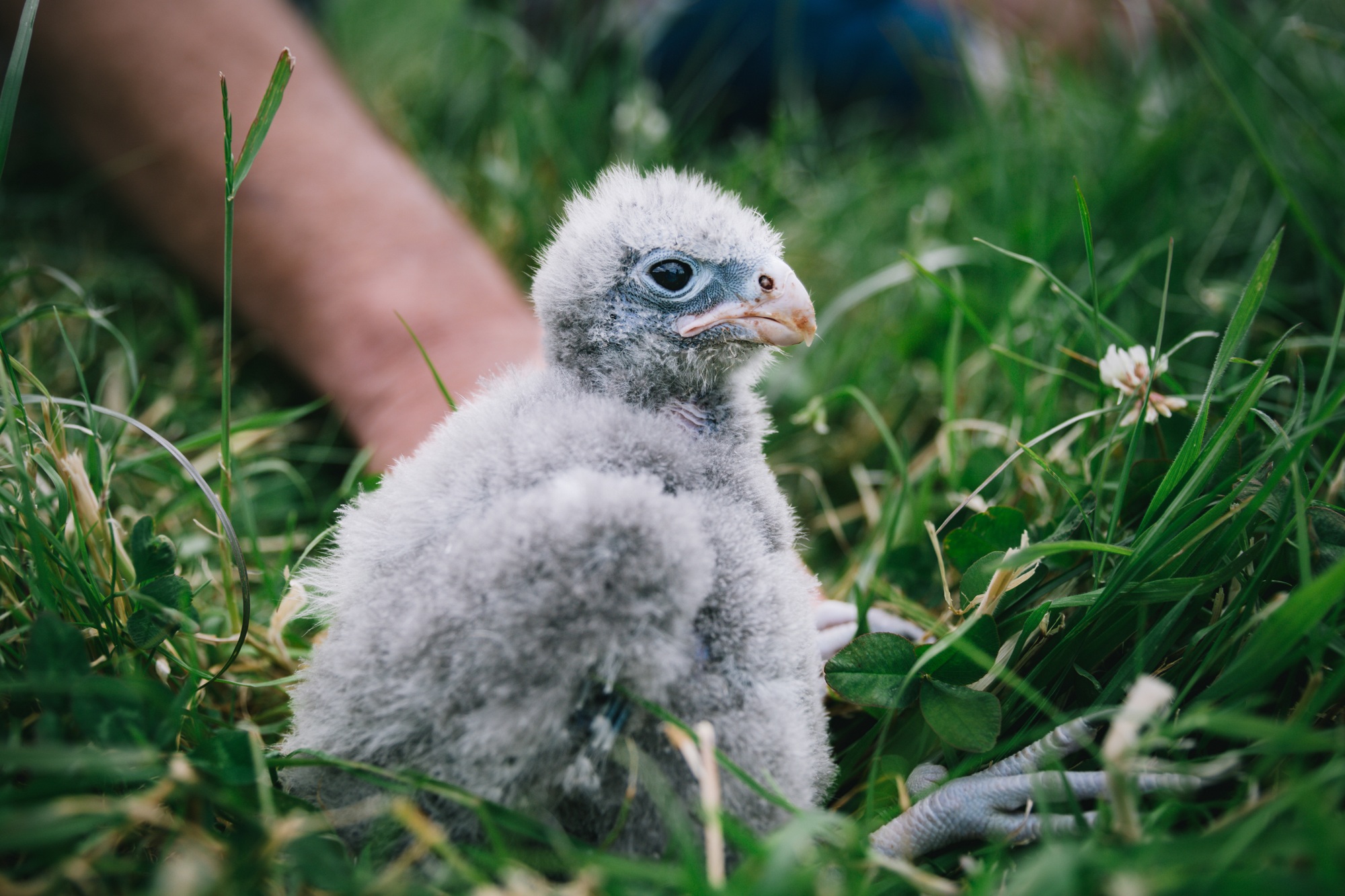
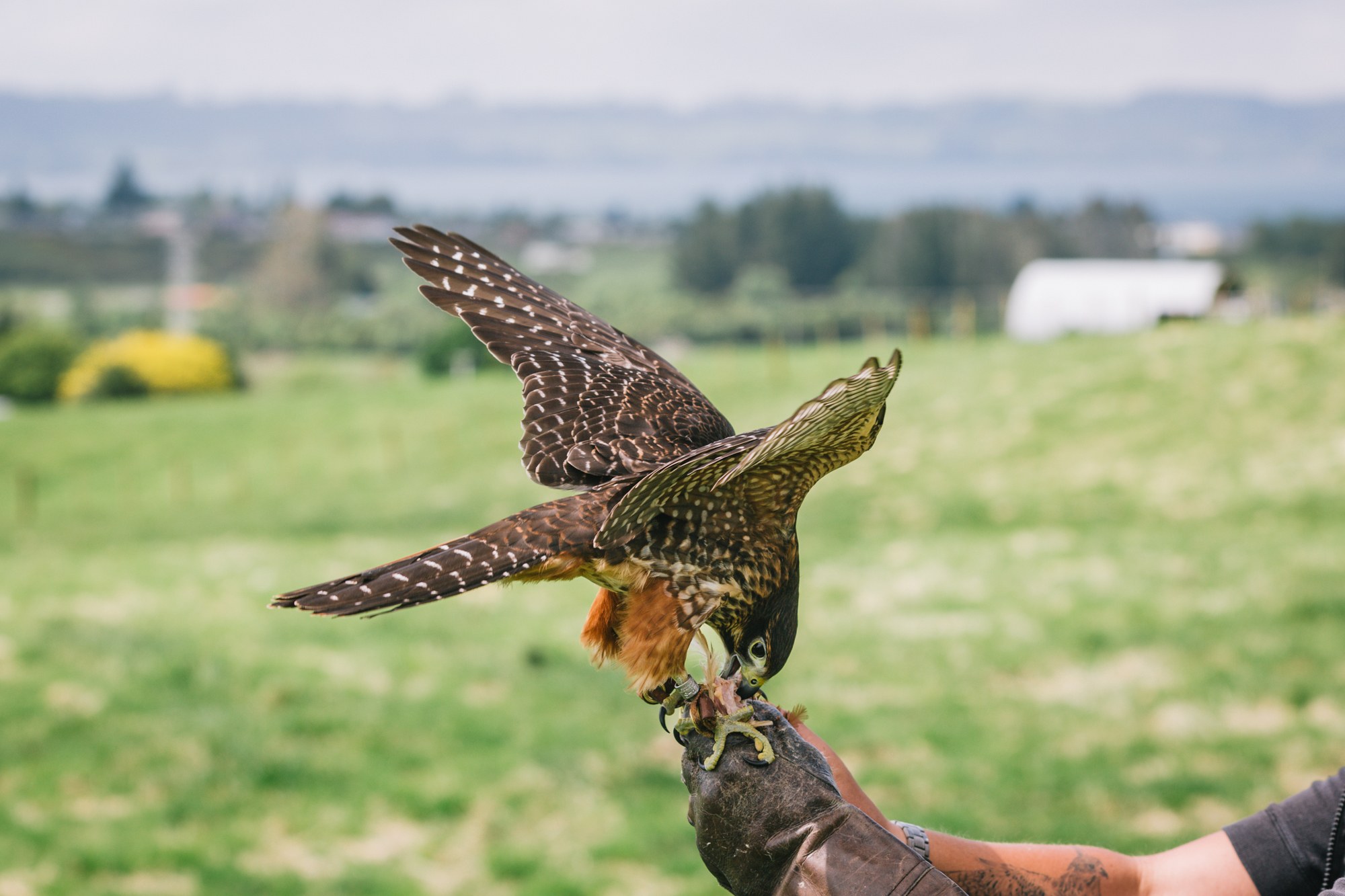
Despite all these troubles, what’s great is that we’re on the right path toward figuring out how to protect these incredible hunters. So many people, especially down here around Wanaka and Cardrona, have rallied together to support this research. Many contribute here to log kārearea sightings.
I don’t actually have many photos of kārearea in the wild because they’re aren’t many. Most of these images came from when I was on the North Island a few years ago in Rotorua with Wingspan, a trust caring for sick, injured, and orphaned kārearea.
This includes research, captive breeding, public awareness work, and rehabilitating raptors back into the wild. The more we contribute, the better!
Have you heard of the kārearea before? Aren’t they beautiful?
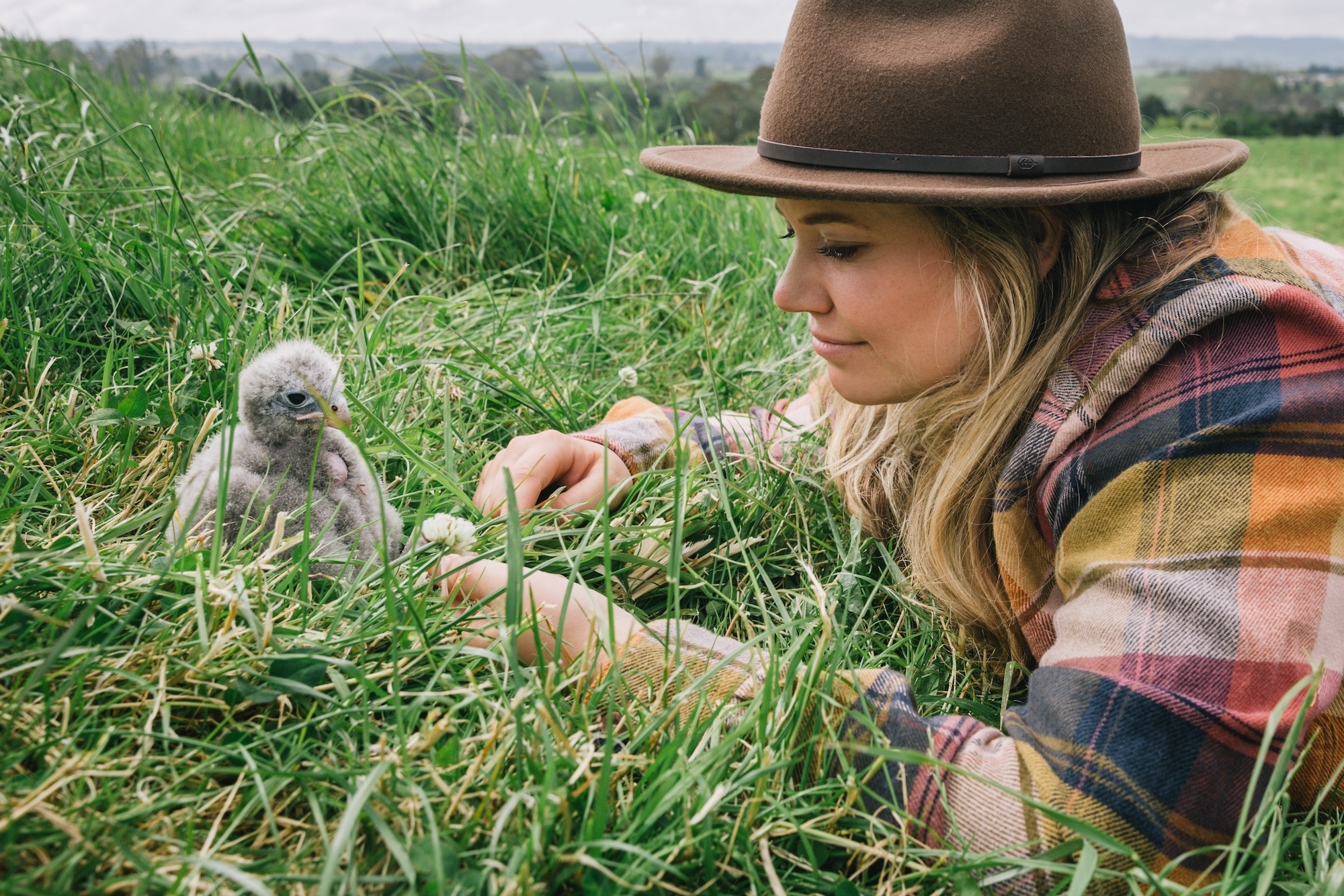
The post Kārearea: the mysterious New Zealand falcon appeared first on Young Adventuress.


